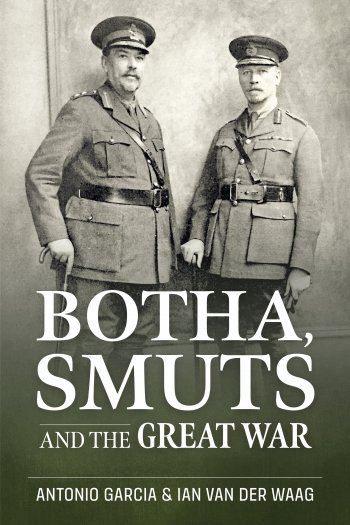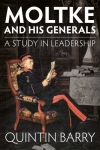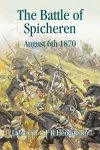-
Załączniki bezpieczeństwa
Załczniki do produktuZałączniki dotyczące bezpieczeństwa produktu zawierają informacje o opakowaniu produktu i mogą dostarczać kluczowych informacji dotyczących bezpieczeństwa konkretnego produktu
-
Informacje o producencie
Informacje o producencieInformacje dotyczące produktu obejmują adres i powiązane dane producenta produktu.HELION
-
Osoba odpowiedzialna w UE
Osoba odpowiedzialna w UEPodmiot gospodarczy z siedzibą w UE zapewniający zgodność produktu z wymaganymi przepisami.
In Botha, Smuts and the Great War 1914–1918 authors Antonio Garcia and Ian Van Der Waag conducted painstaking research in South Africa and the United Kingdom to produce this, first-of-a-kind volume on the wartime roles of South African prime minister, General Louis Botha and his deputy General Jan Smuts. These very different men appealed to different audiences. Botha’s nuance and emotional intelligence complemented Smuts’s intellectualism. Thrown into a world conflagration in August 1914 and facing internal rebellion and the threat posed by German troops on the borders, they led South Africa’s Union Defence Force.
Both Botha and Smuts commanded in the field. Steadily, the South African army they commanded – benefiting from wartime training, sometimes in the field – gained resilience, experience, and battle-hardiness, adapting to the conditions of the campaigns and the demands of the tasks. South Africa’s campaigns were complex and divergent, starting with the invasion of neighbouring German South West Africa – to neutralise enemy radio stations and so aid the security of the South Atlantic. Suddenly suspended following the outbreak of the Afrikaner Rebellion, the campaign recommenced in January 1915. Following its conclusion, an infantry brigade, raised for Western Front service, was diverted to Egypt before facing near annihilation at Delville Wood. Simultaneously, a large South African force, fighting alongside British, African and Indian forces, overcame German resistance in East Africa whilst a brigade of field artillery and later the Cape Corps served in Egypt and Palestine. Moreover, approximately 6,500 South Africans served in the British Army, Royal Flying Corps/Royal Air Force and in the Royal Navy.
Although lionised during the war by a British public hungry for heroes, there is a different side to Botha and Smuts. Shunned by Afrikaner nationalists at the time, they have remained divisive figures. Responsible for the enactment of the Land Act of 1913, which shaped South Africa’s socio-economic and political landscape. Botha’s statues in Cape Town, Durban and Pretoria were vandalised on a number of occasions between 2015 and 2022, and there were recent calls for Smuts’s statues to be removed. Behind Botha’s charming, attractive façade, and Smuts’s stoic machine, were two very human, imperfect, and quite probably inconsiderate, men. Together they provide a wonderful lens through which to examine the potent forces of the early twentieth-century world and the country they hoped to forge. Myopic compatriots had constrained their plans; but it was the outbreak of war in 1914 that offered the most significant opportunities and brought the most adverse challenges. They fought insurmountable odds, and achieved great victories, at home and abroad, but also made startling errors and, ultimately, in classical fashion risked being crushed by the weight of the world they tried to create.








